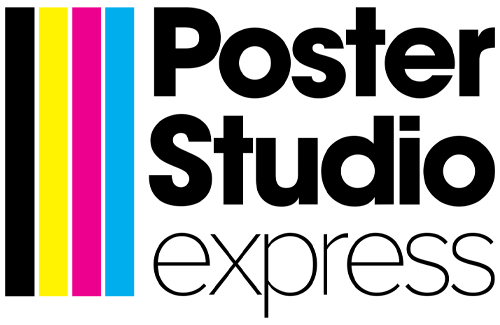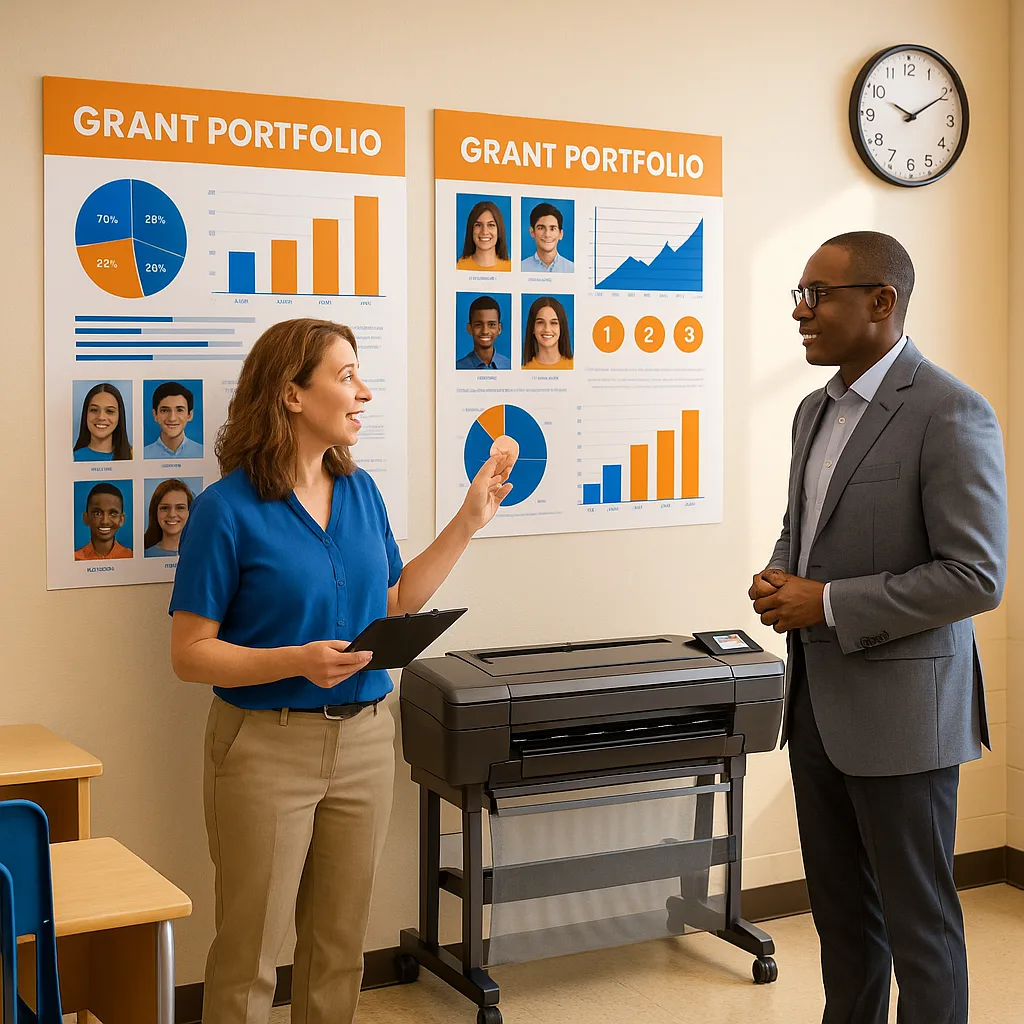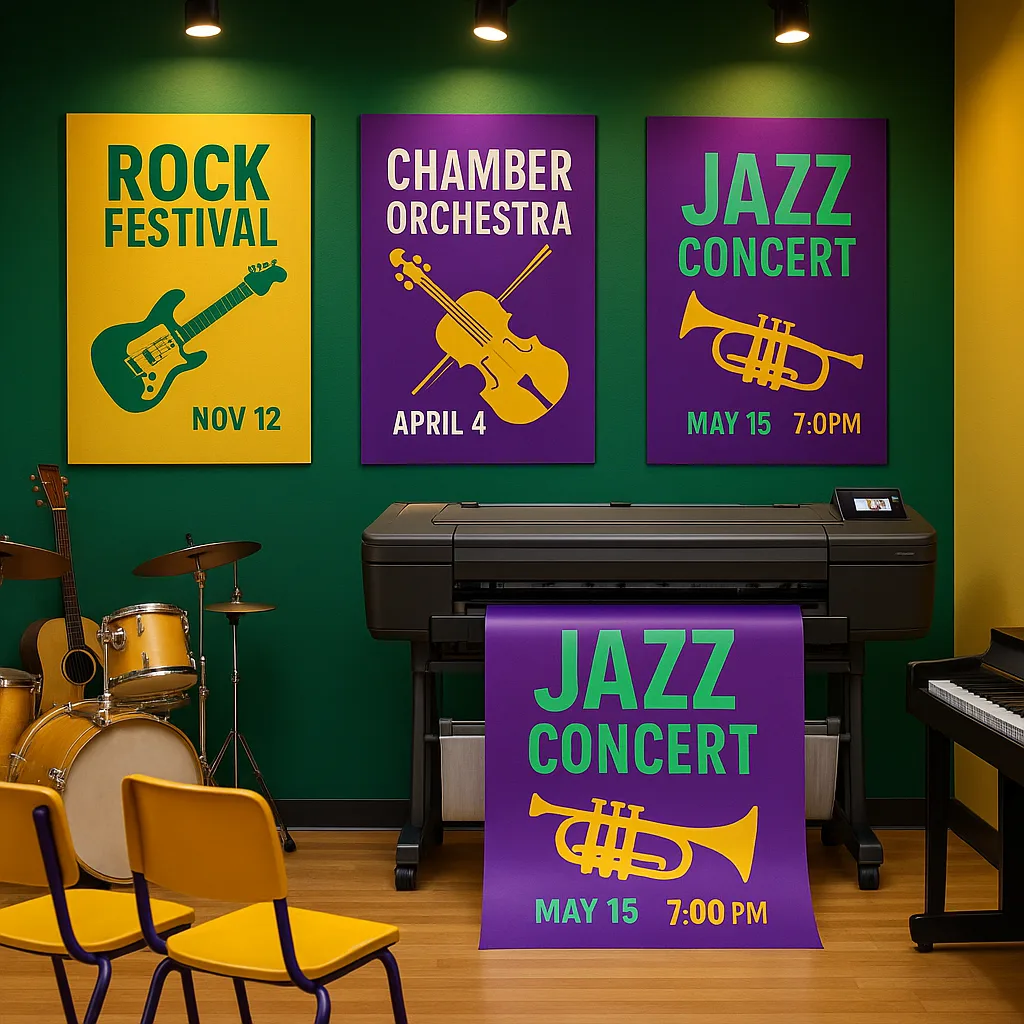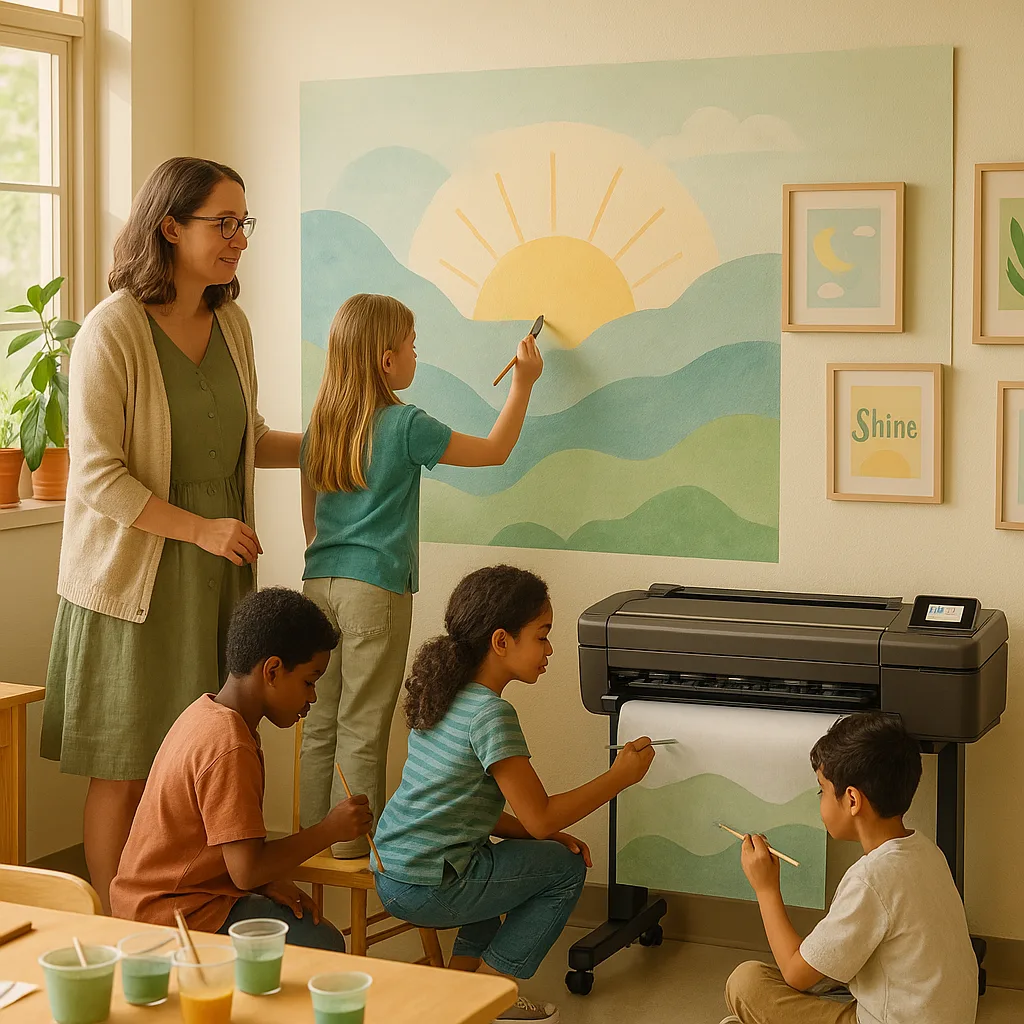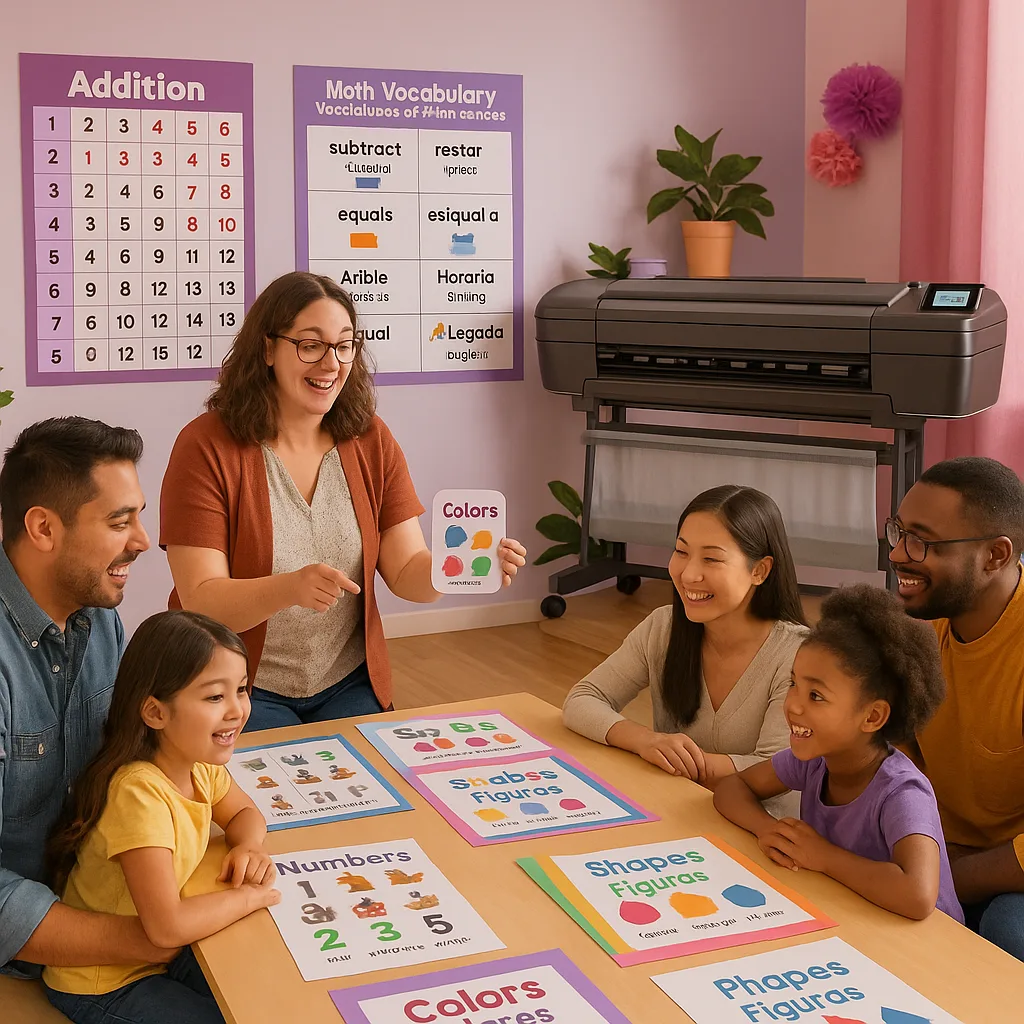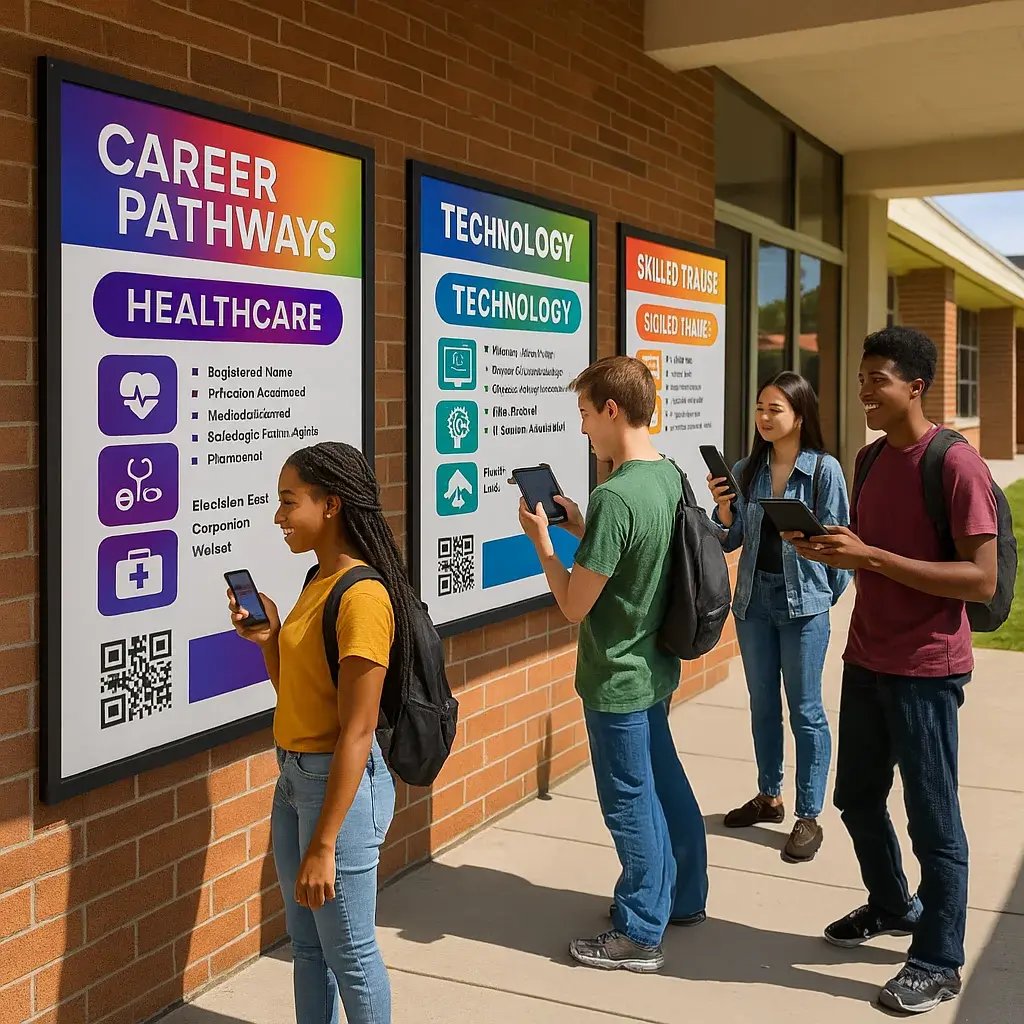
Printer for Posters: Weather-Proof Career Galleries
When traditional indoor career displays migrate outdoors, weather becomes the enemy. Rain warps paper, sun fades colors, and wind tears down carefully crafted career pathway posters. Yet outdoor learning spaces offer unparalleled opportunities for student engagement. The solution lies in leveraging the right printer for posters outdoor career displays that can withstand nature’s challenges while maintaining professional quality.
The Science Behind Weather-Resistant Career Displays
Creating durable outdoor career exploration galleries requires understanding both material science and printing technology. Latex printing represents a paradigm shift from traditional inkjet methods. Unlike water-based inks that dissolve in rain or pigment inks that fade under UV exposure, latex inks actually fuse with the media substrate through heat application. This process creates a molecular bond that resists environmental degradation.
According to HP’s Latex Technology Research, properly printed latex displays maintain color vibrancy for up to three years outdoors without lamination. For schools investing in comprehensive career pathway programs, this durability translates to significant cost savings. Consider that replacing faded displays quarterly costs approximately $2,400 annually, while latex-printed materials require replacement only every three years.
Material selection proves equally critical. Standard poster paper absorbs moisture, causing immediate degradation. Weather-resistant substrates include adhesive vinyl, banner material, and specialized outdoor films. Each serves specific purposes within an outdoor career gallery framework.

Printer for Posters Outdoor Career Displays: Technical Specifications
Not all printers can produce weather-resistant materials. Schools need poster maker machines for schools specifically designed for latex printing. The HP Latex 800 Printer exemplifies this technology, offering 64-inch printing width perfect for large-scale career cluster displays. Its water-based latex inks cure at temperatures reaching 110°C, creating scratch-resistant, waterproof prints immediately upon output.
Key specifications for outdoor career display production include print resolution of at least 1200 dpi for readable QR codes, media handling capabilities supporting 15-mil banner material, and integrated cutting systems for custom shapes. Additionally, automatic maintenance features prevent printhead clogging during extended downtime between large projects.
Budget-conscious districts should calculate total cost of ownership rather than initial purchase price. While latex printers require higher upfront investment, eliminated lamination costs and extended display lifespan often result in lower per-print expenses within 18 months.
Designing Interactive Career Pathways for Outdoor Environments
Effective outdoor career galleries balance visual impact with functional durability. Design principles differ significantly from indoor displays. Contrast ratios must increase to compensate for bright sunlight, while typography requires larger point sizes for distance viewing. Career pathway information benefits from hierarchical organization using color-coding systems that remain distinct even under varied lighting conditions.
Interactive elements transform static displays into engaging exploration tools. QR codes linking to career videos, virtual job shadowing experiences, and industry professional interviews add depth without cluttering visual design. However, QR code implementation requires specific considerations for outdoor use. Codes must be sized at minimum 2 inches square with high contrast backgrounds. Protective clear overlays prevent weather damage while maintaining scanability.
The Lifetime Design Service helps schools create weather-appropriate layouts optimized for outdoor viewing distances and lighting conditions. Professional designers understand how colors shift under natural light and can adjust accordingly.
Material Selection Strategies for Long-Term Durability
Substrate choice determines display longevity more than any other factor. For permanent installations, self-adhesive vinyl applied to aluminum composite panels provides decade-long durability. Semi-permanent displays benefit from 13-ounce scrim banner material that flexes without tearing in wind while maintaining water resistance. Temporary career fair signage works well on 8-mil polypropylene, offering six-month outdoor life at minimal cost.
Each material requires specific printer settings and handling procedures. Vinyl demands higher curing temperatures to ensure adhesive activation, while banner material needs tension adjustment to prevent buckling during printing. Schools utilizing their own printer for posters must train staff on these nuances to avoid costly material waste.
Edge finishing proves critical for outdoor applications. Unfinished edges allow moisture infiltration, causing premature failure. Heat welding, hemming, or edge sealing tape prevents this degradation. For displays exceeding 48 inches, wind slits reduce stress on mounting hardware during storms.
Implementation Strategies for School Career Centers
Successful outdoor career gallery implementation requires systematic planning. Begin with location assessment, identifying areas with optimal traffic flow and weather protection. South-facing walls experience maximum UV exposure, necessitating more frequent replacement schedules. Covered walkways offer compromise between outdoor accessibility and environmental protection.
Content organization follows career cluster frameworks established by state CTE standards. The sixteen nationally recognized career clusters translate well to modular display systems. Each cluster receives dedicated space with industry-specific imagery, required education pathways, and local employer connections. This standardized approach simplifies updates as labor market information changes.
Integration with existing career counseling programs amplifies impact. Poster maker machines for schools enable counselors to create customized pathway maps for individual students, incorporating personal interests with regional opportunities. These personalized displays, printed on weather-resistant media, accompany students through outdoor career exploration activities.
QR Code Integration for Enhanced Engagement
Static displays limit information depth, but QR codes bridge physical and digital experiences. Each career cluster display can link to dedicated landing pages featuring day-in-the-life videos, salary projections, and required certifications. Advanced implementations include augmented reality experiences where students point devices at displays to see 3D career environments.
Technical requirements for outdoor QR implementation include minimum 30% error correction to compensate for partial weather damage, white borders exceeding 4 modules width, and testing across multiple devices under various lighting conditions. Analytics tracking reveals which careers generate most interest, informing curriculum development and guest speaker invitations.
Security considerations matter when implementing QR systems. Links should direct to school-controlled domains rather than third-party sites. Regular audits ensure content remains appropriate and functional. Password-protected administrative panels allow authorized staff to update linked content without reprinting physical displays.
Measuring Impact and Continuous Improvement
Quantifying outdoor career gallery effectiveness requires multi-faceted assessment. Traditional metrics include student career assessment completion rates and counseling appointment scheduling. However, QR code analytics provide granular engagement data previously unavailable. Schools can track which pathways generate highest interest, optimal viewing times, and conversion rates from viewing to deeper exploration.
The National Center for Education Statistics reports that students exposed to comprehensive career exploration programs demonstrate 23% higher post-secondary enrollment rates. Outdoor galleries expand exposure opportunities beyond traditional classroom time, potentially amplifying these benefits.
Continuous improvement cycles should incorporate student feedback, weather impact assessments, and content relevance reviews. Quarterly walkthroughs document physical deterioration, while monthly analytics reviews identify engagement trends. This data informs replacement schedules and content updates, maximizing return on investment.
Cost-Benefit Analysis for District Implementation
Initial investment in latex poster maker machines for schools ranges from $8,000 to $25,000 depending on width and features. However, comprehensive cost analysis must include traditional alternatives. Outsourced weather-resistant printing averages $15 per square foot, making a single 4×8 foot career display cost $480. Districts creating quarterly updates for 16 career clusters spend $30,720 annually on outsourced printing alone.
In-house production using the Education Studio 36 Poster Maker reduces per-print costs to approximately $2.50 per square foot after equipment amortization. Additional savings emerge from eliminated shipping delays and rush charges. Most districts achieve positive ROI within 18 months, with subsequent years generating substantial savings redirected to program expansion.
Hidden costs warrant consideration. Staff training requires 8-12 hours initially, with ongoing support needs. Material storage demands climate-controlled space. However, the flexibility to create custom displays responding to immediate needs often outweighs these considerations.
Future Innovations in Outdoor Career Display Technology
Emerging technologies promise enhanced outdoor display capabilities. White ink printing enables vibrant graphics on transparent and metallic substrates, creating unique visual effects impossible with traditional methods. The Education Flex 30 Poster Printer Cutter Package B incorporates white ink capability, expanding creative possibilities for career displays.
Integration with student information systems could enable dynamic display updates reflecting real-time labor market data. Imagine career cluster displays automatically updating salary ranges based on Bureau of Labor Statistics releases, or highlighting pathways with immediate local job openings. While full automation remains years away, hybrid approaches combining static weather-resistant bases with updatable digital elements show promise.
Sustainability concerns drive material innovation. Biodegradable substrates maintaining weather resistance are entering markets, though durability currently lags traditional materials. Schools committed to environmental stewardship might accept shorter replacement cycles in exchange for reduced ecological impact.
Best Practices for Maintenance and Longevity
Proper maintenance extends display life significantly. Monthly cleaning with non-abrasive solutions removes environmental buildup that accelerates degradation. Inspection protocols should check for edge lifting, color fading, and substrate integrity. Documentation through photographs creates replacement timeline baselines.
Seasonal considerations affect maintenance schedules. Winter installations require additional adhesive or mechanical fasteners to compensate for thermal contraction. Summer installations benefit from UV protective oversprays applied quarterly. Hurricane-prone regions must implement rapid removal protocols protecting investments from catastrophic weather.
Storage of replacement materials demands attention. Vinyl and banner materials require vertical storage to prevent creasing. Temperature-controlled environments prevent adhesive degradation. Proper inventory management ensures rapid replacement when damage occurs, maintaining gallery completeness.
Conclusion: Transforming Career Exploration Through Durable Displays
Outdoor career exploration galleries represent evolutionary advancement in career readiness education. By investing in appropriate printer for posters outdoor career displays technology, schools create lasting resources that engage students beyond traditional classroom boundaries. The combination of weather-resistant materials, interactive QR elements, and strategic placement transforms unused outdoor spaces into dynamic learning environments.
Success requires careful planning, appropriate technology selection, and ongoing maintenance commitment. However, the proven impact on student career awareness and post-secondary planning justifies these investments. As districts nationwide recognize outdoor learning’s benefits, weather-proof career displays will transition from innovation to expectation.
Schools ready to implement outdoor career galleries should begin with pilot programs testing material durability and student engagement. Partner with Poster Studio Express specialists who understand educational environments and can recommend appropriate solutions. With proper planning and technology, any school can create inspiring outdoor career exploration experiences that withstand both weather and time.
Ready to Create Weather-Proof Career Displays?
Transform your outdoor spaces into engaging career exploration galleries. Call 866-788-7900 to discuss your vision with our education specialists.
